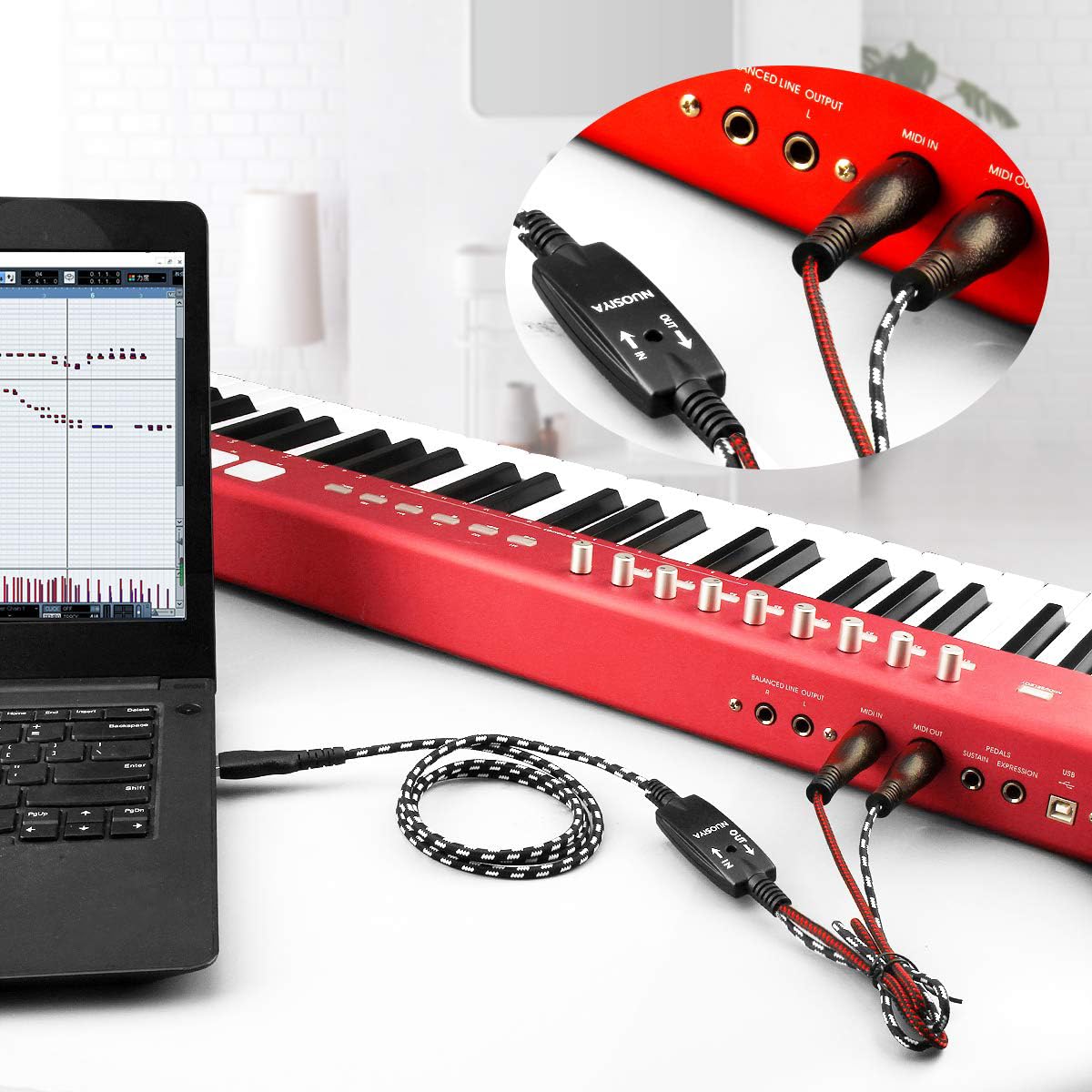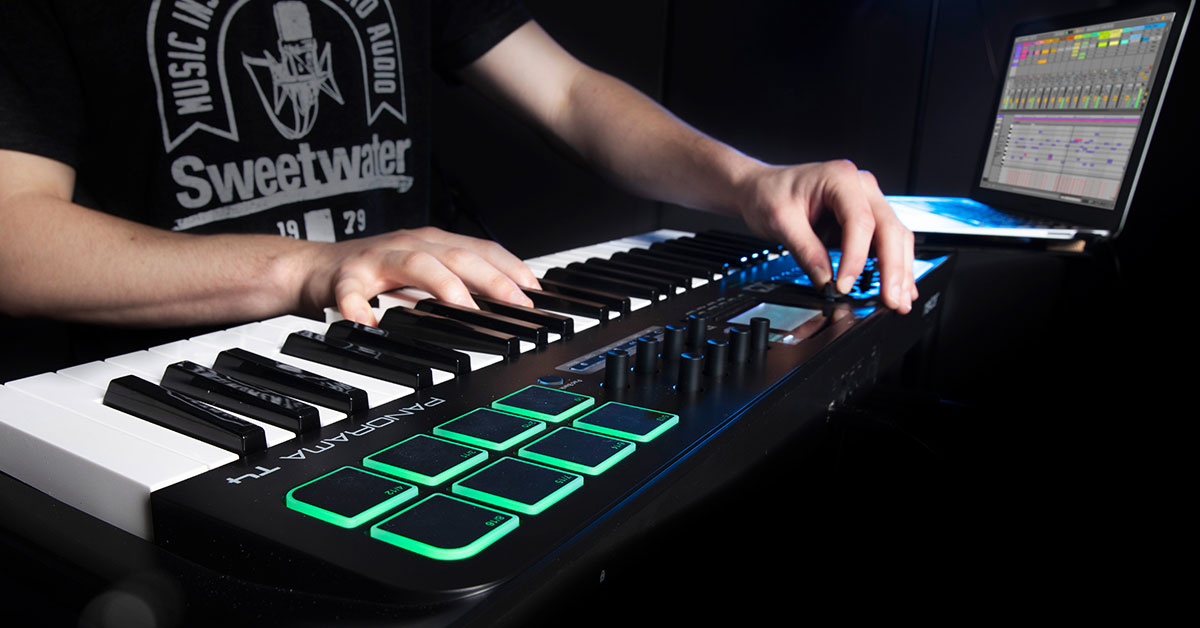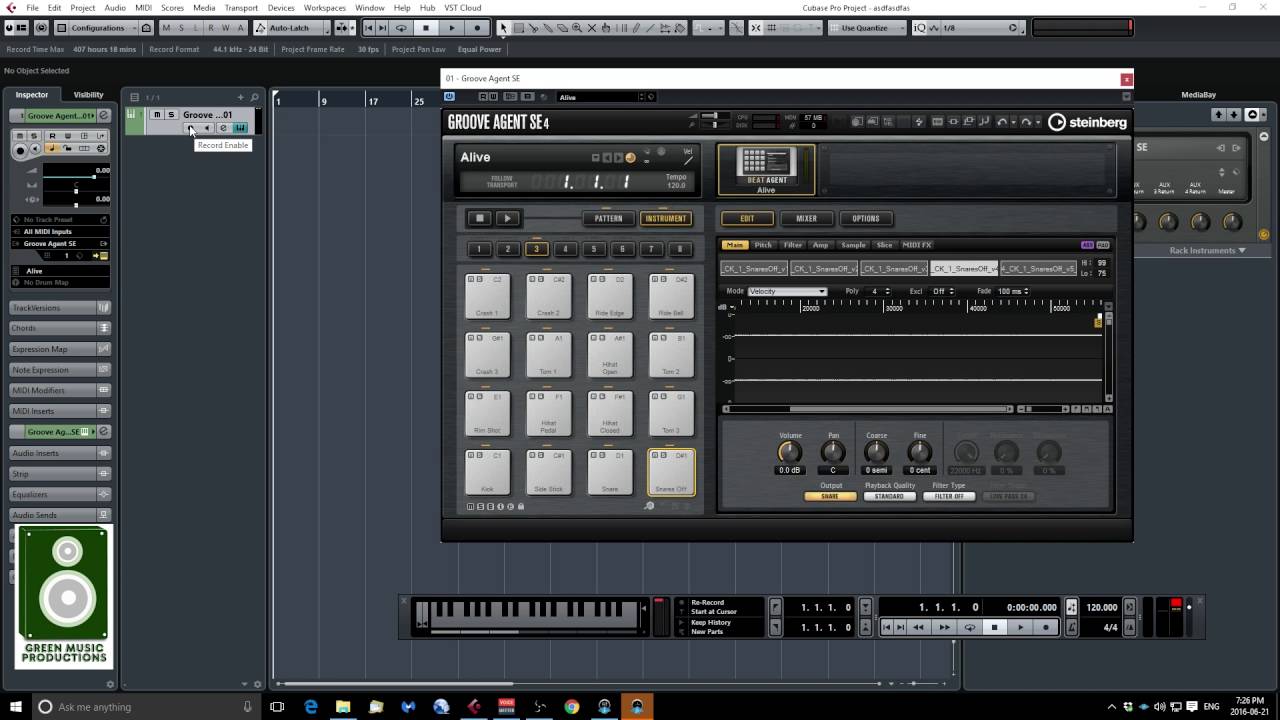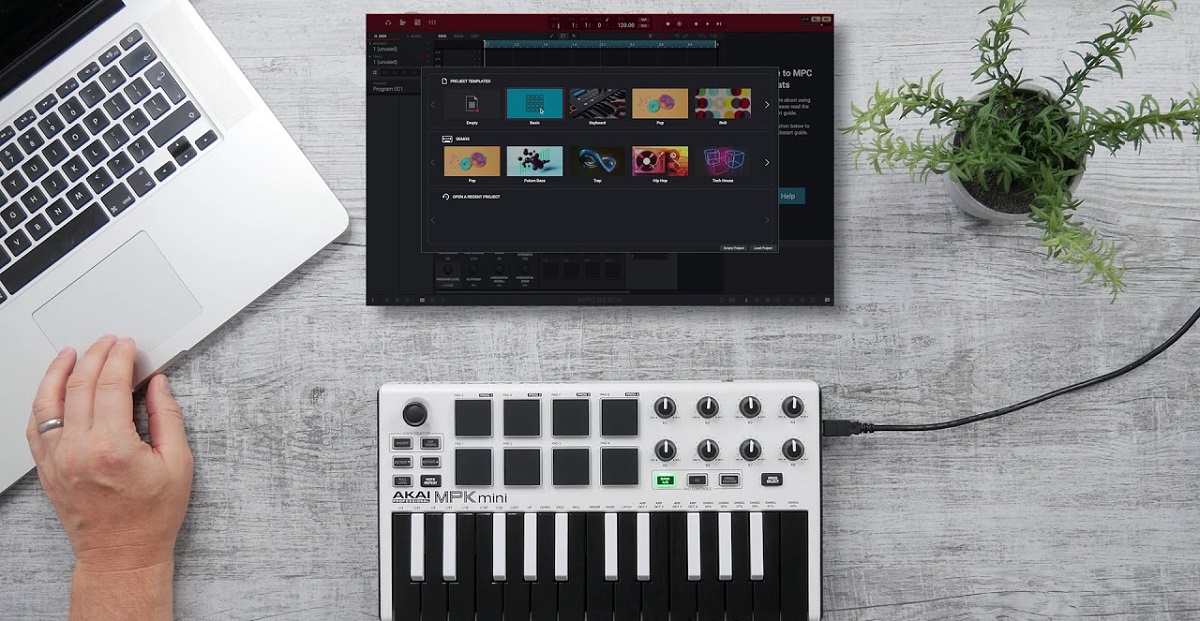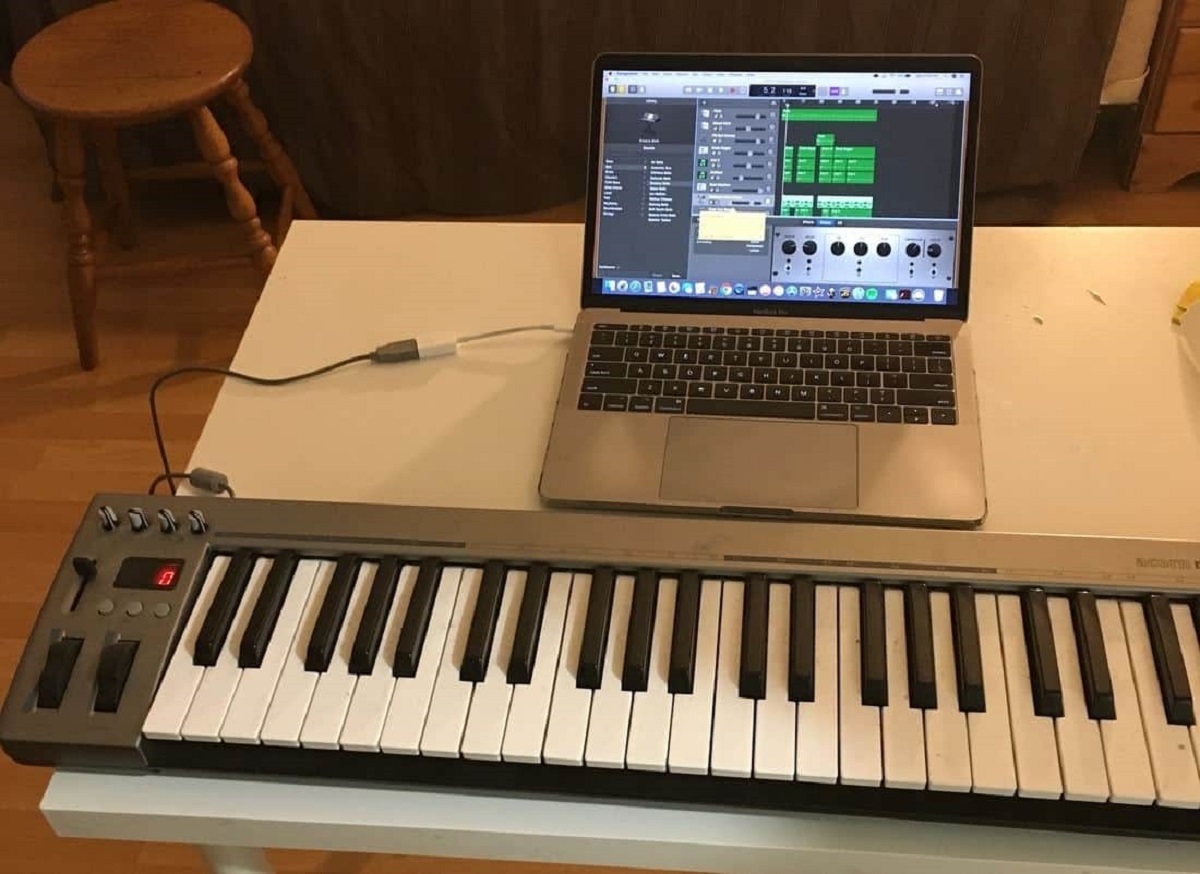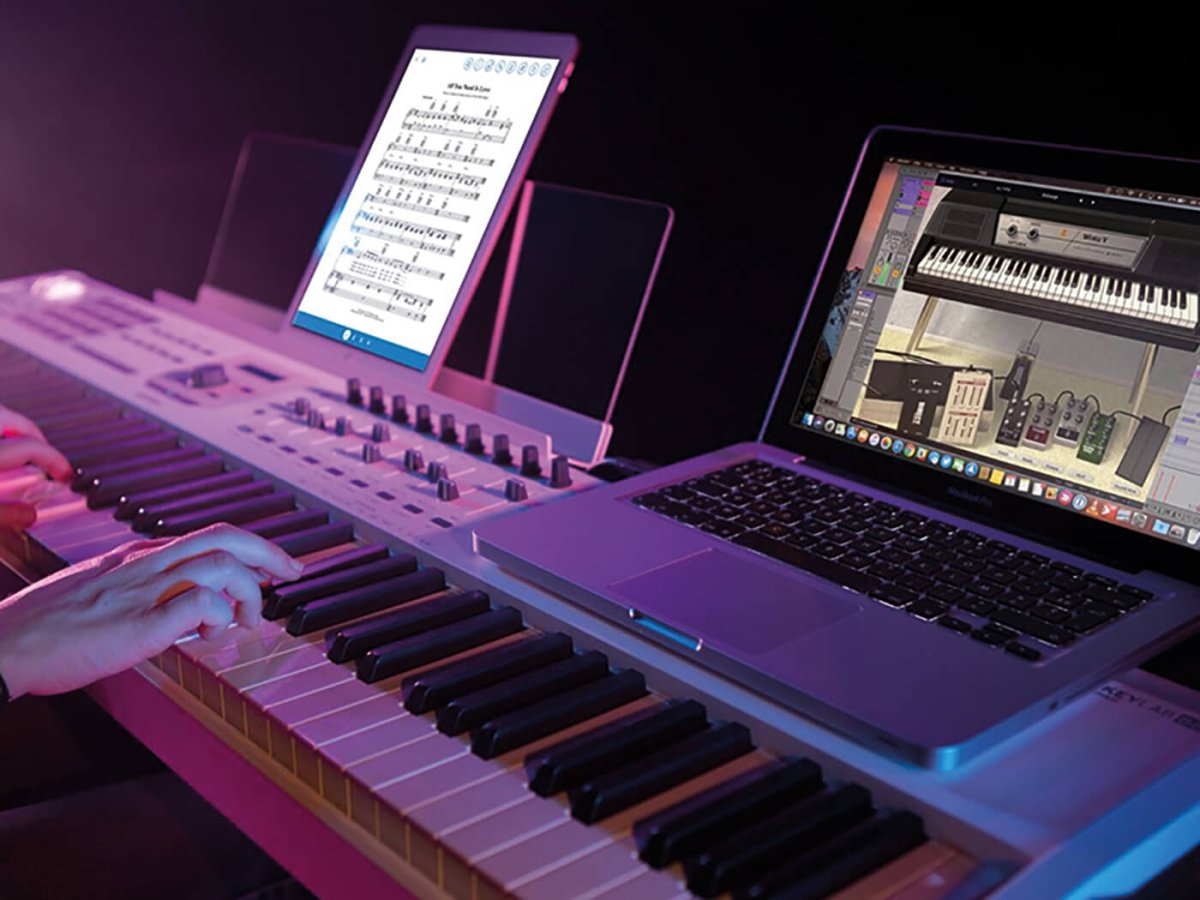Introduction
If you're a music enthusiast or a professional musician, you likely understand the importance of having the right equipment to bring your musical ideas to life. One essential piece of equipment for many musicians is the MIDI keyboard. These versatile instruments allow for the creation of music in a digital format, making them ideal for a wide range of musical applications, from composition and production to live performance.
In the world of MIDI keyboards, the USB cable plays a crucial role in connecting the keyboard to other devices, such as computers, laptops, tablets, and even smartphones. Understanding the different types of USB cables available for MIDI keyboards and knowing how to choose the right one can significantly impact the functionality and performance of your setup.
In this article, we'll explore the purpose of a MIDI keyboard and delve into the significance of the USB cable in the context of MIDI connectivity. We'll also discuss the various types of USB cables commonly used with MIDI keyboards and provide guidance on selecting the most suitable cable for your specific needs. By the end of this article, you'll have a comprehensive understanding of the USB cables used with MIDI keyboards, empowering you to make informed decisions when setting up your musical workstation. Let's embark on this exploration of the vital link between MIDI keyboards and USB cables.
What is a MIDI Keyboard?
A MIDI keyboard, also known as a digital piano or a controller keyboard, is a versatile musical instrument that utilizes the Musical Instrument Digital Interface (MIDI) technology to generate and control sounds. Unlike traditional pianos, MIDI keyboards do not produce sound on their own. Instead, they serve as input devices that transmit MIDI data to external devices, such as computers, synthesizers, and sound modules, which then produce the actual sounds.
One of the key advantages of MIDI keyboards is their ability to replicate a wide range of musical instruments through the use of sampled sounds and digital synthesis. This versatility allows musicians to access an extensive library of sounds and create complex compositions with ease. Additionally, MIDI keyboards often feature various controls, such as knobs, sliders, and pads, which can be assigned to manipulate different aspects of the sound, providing a highly customizable and expressive playing experience.
For music producers and composers, MIDI keyboards are indispensable tools for creating and arranging music within digital audio workstations (DAWs). Their intuitive interface and dynamic capabilities make them ideal for recording and editing MIDI data, enabling users to craft intricate melodies, harmonies, and rhythms with precision.
Whether you're a professional musician, a budding producer, or an enthusiast exploring the world of music production, a MIDI keyboard offers a versatile and powerful platform for expressing your musical ideas. Its seamless integration with MIDI technology and the vast array of sounds and controls make it an essential component of any modern music production setup.
What is a USB Cable for a MIDI Keyboard?
A USB cable for a MIDI keyboard serves as the physical link between the keyboard and other electronic devices, such as computers, audio interfaces, and mobile devices. It facilitates the transfer of MIDI data, including note information, control changes, and other performance data, between the MIDI keyboard and the connected device. This seamless connection allows musicians and producers to integrate their MIDI keyboards into their digital audio workstations (DAWs) and music production setups, enabling them to control virtual instruments, record MIDI performances, and manipulate sound parameters with ease.
USB cables for MIDI keyboards are designed to provide reliable and high-speed data transmission, ensuring that the MIDI data is accurately captured and transmitted between the devices. These cables typically feature a USB Type A connector on one end, which plugs into the computer or other compatible devices, and a MIDI connector on the other end, which connects to the MIDI input or output port on the keyboard. Some MIDI keyboards also feature USB Type B connectors, requiring a compatible USB cable with a Type A connector on one end and a Type B connector on the other.
It’s important to note that the USB cable not only serves as a conduit for MIDI data but also often provides power to the MIDI keyboard, eliminating the need for an external power supply in many cases. This feature adds to the convenience and portability of MIDI keyboards, making them suitable for various performance and production scenarios.
Overall, the USB cable for a MIDI keyboard plays a crucial role in establishing a seamless and efficient connection between the keyboard and external devices, enabling musicians and producers to harness the full potential of their MIDI instruments within their creative workflows.
Types of USB Cables for MIDI Keyboards
When it comes to connecting MIDI keyboards to external devices, various types of USB cables are commonly used to establish the necessary link for transmitting MIDI data and, in some cases, providing power to the keyboard. Understanding the different types of USB cables available for MIDI keyboards is essential for selecting the appropriate cable that suits your specific requirements. Here are the primary types of USB cables used with MIDI keyboards:
- USB Type A to MIDI: This type of USB cable features a USB Type A connector on one end, which plugs into the USB port of a computer or compatible device, and a MIDI connector on the other end, which connects to the MIDI input or output port of the keyboard. This configuration allows for the seamless transmission of MIDI data between the keyboard and the connected device, enabling MIDI control and data exchange within digital audio workstations and music production software.
- USB Type B to MIDI: Some MIDI keyboards are equipped with USB Type B ports, requiring a USB Type B to MIDI cable for connectivity. Similar to the Type A to MIDI cable, this type of cable facilitates the transfer of MIDI data and power between the keyboard and external devices, providing a reliable and efficient connection for music production and performance purposes.
- USB-C to MIDI: With the increasing prevalence of USB-C ports on modern computers and mobile devices, USB-C to MIDI cables have become essential for connecting MIDI keyboards to these devices. These cables feature a USB-C connector on one end and a MIDI connector on the other, enabling seamless integration between USB-C-equipped devices and MIDI keyboards, expanding the compatibility and versatility of MIDI setups.
It’s important to note that the selection of the appropriate USB cable for a MIDI keyboard depends on the specific port configuration of the keyboard and the compatibility with the devices to which it will be connected. Additionally, considering the cable length, build quality, and data transmission speed is crucial for ensuring a reliable and efficient connection that meets the demands of professional music production and performance environments.
By understanding the various types of USB cables available for MIDI keyboards, musicians and producers can make informed decisions when setting up their MIDI workstations, ensuring seamless connectivity and optimal performance for their creative endeavors.
How to Choose the Right USB Cable for Your MIDI Keyboard
When selecting a USB cable for your MIDI keyboard, several factors should be considered to ensure that the chosen cable meets the specific requirements of your setup. Here are essential considerations to keep in mind when choosing the right USB cable for your MIDI keyboard:
- Port Compatibility: Determine the type of USB port on your MIDI keyboard—whether it’s a USB Type A, Type B, or USB-C port. Select a USB cable that features the corresponding connector to ensure a proper fit and reliable connection.
- Cable Length: Assess the distance between your MIDI keyboard and the connected device. Choose a USB cable with an appropriate length that allows for flexible positioning without causing tension or strain on the cable.
- Data Transmission Speed: For professional music production and performance applications, consider USB cables that offer high-speed data transmission to minimize latency and ensure responsive MIDI performance.
- Build Quality: Opt for USB cables that are durably constructed with high-quality materials to withstand frequent use and provide long-term reliability. Cables with reinforced connectors and robust shielding offer enhanced durability and signal integrity.
- Power Delivery (if applicable): If your MIDI keyboard relies on USB power, ensure that the selected USB cable can deliver the necessary power to the keyboard while maintaining stable data transmission.
- Compatibility with Devices: Consider the compatibility of the USB cable with a wide range of devices, including computers, audio interfaces, and mobile devices, to ensure versatile connectivity options for your MIDI keyboard.
Additionally, consulting the manufacturer’s recommendations and specifications for your MIDI keyboard can provide valuable insights into the recommended USB cable types and compatibility guidelines. Furthermore, seeking input from experienced musicians, producers, or audio professionals who have expertise in MIDI setups can offer practical advice and recommendations for choosing the right USB cable for your specific needs.
By carefully evaluating these factors and making an informed decision based on the requirements of your MIDI keyboard and the intended usage scenarios, you can select a USB cable that facilitates seamless connectivity, reliable data transmission, and optimal performance for your musical endeavors.
Conclusion
Understanding the pivotal role of USB cables in connecting MIDI keyboards to external devices is essential for musicians, producers, and enthusiasts seeking to optimize their music production and performance setups. The seamless transmission of MIDI data and, in some cases, power delivery facilitated by USB cables significantly impacts the functionality and versatility of MIDI keyboards within digital audio workstations and live performance environments. By exploring the various types of USB cables available for MIDI keyboards and considering key factors when selecting the right cable, individuals can ensure a reliable and efficient connection that meets their specific needs.
Whether it’s the compatibility of USB Type A, Type B, or USB-C connectors, the consideration of cable length and data transmission speed, or the evaluation of build quality and power delivery capabilities, the process of choosing the right USB cable for a MIDI keyboard requires careful deliberation. By leveraging the insights provided in this article and seeking guidance from industry professionals and experienced users, individuals can make informed decisions that enhance the connectivity, performance, and reliability of their MIDI setups.
Ultimately, the harmonious integration of MIDI keyboards with compatible USB cables empowers musicians and producers to unleash their creativity, express musical ideas with precision, and unlock the full potential of their MIDI instruments. As technology continues to advance and connectivity options evolve, staying informed about the latest developments in USB cables and MIDI connectivity ensures that music enthusiasts can adapt their setups to meet the demands of modern music production and performance.
With a comprehensive understanding of the significance of USB cables for MIDI keyboards and the knowledge to select the right cable for specific requirements, individuals can embark on a musical journey filled with seamless connectivity, boundless creativity, and unparalleled sonic expression.







